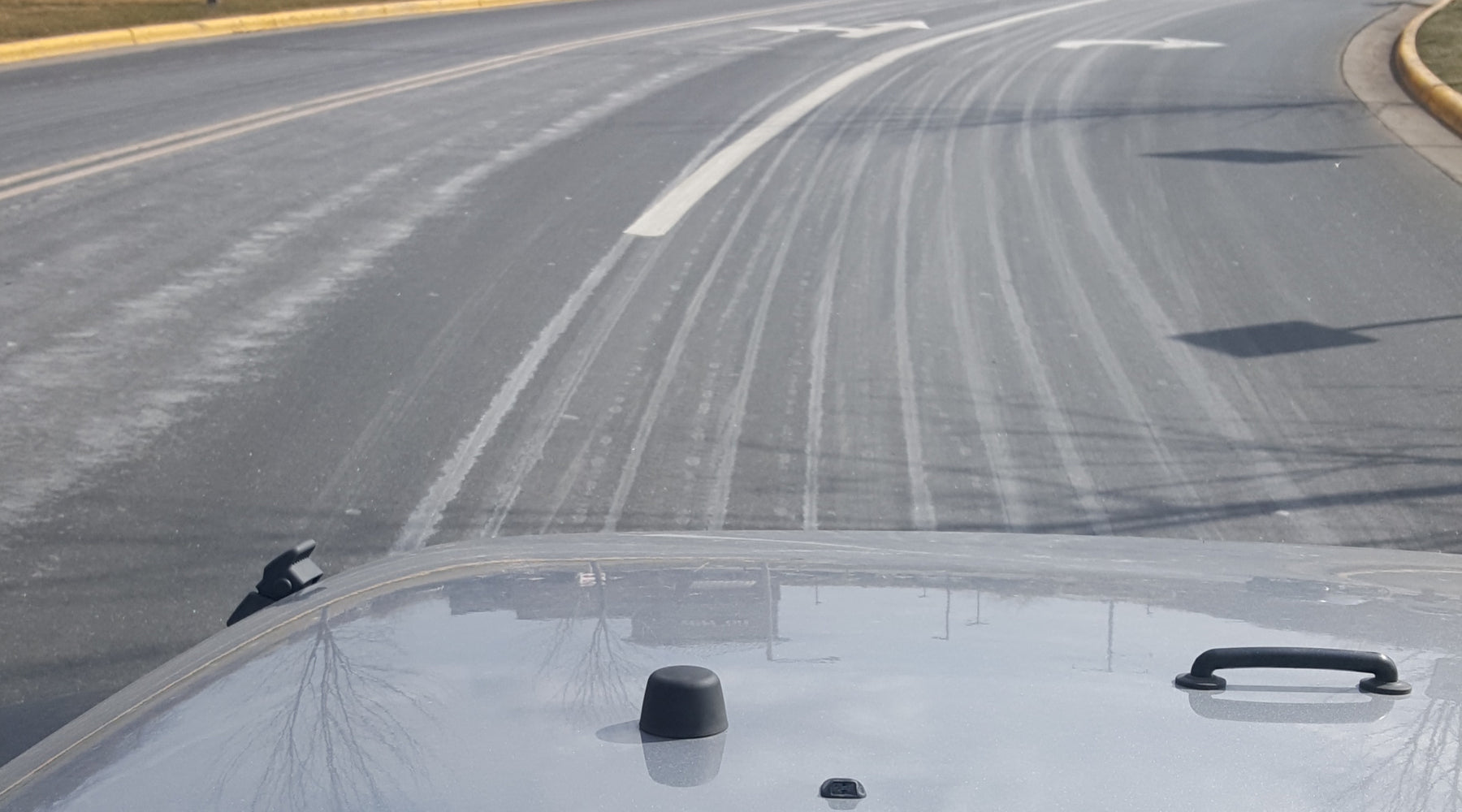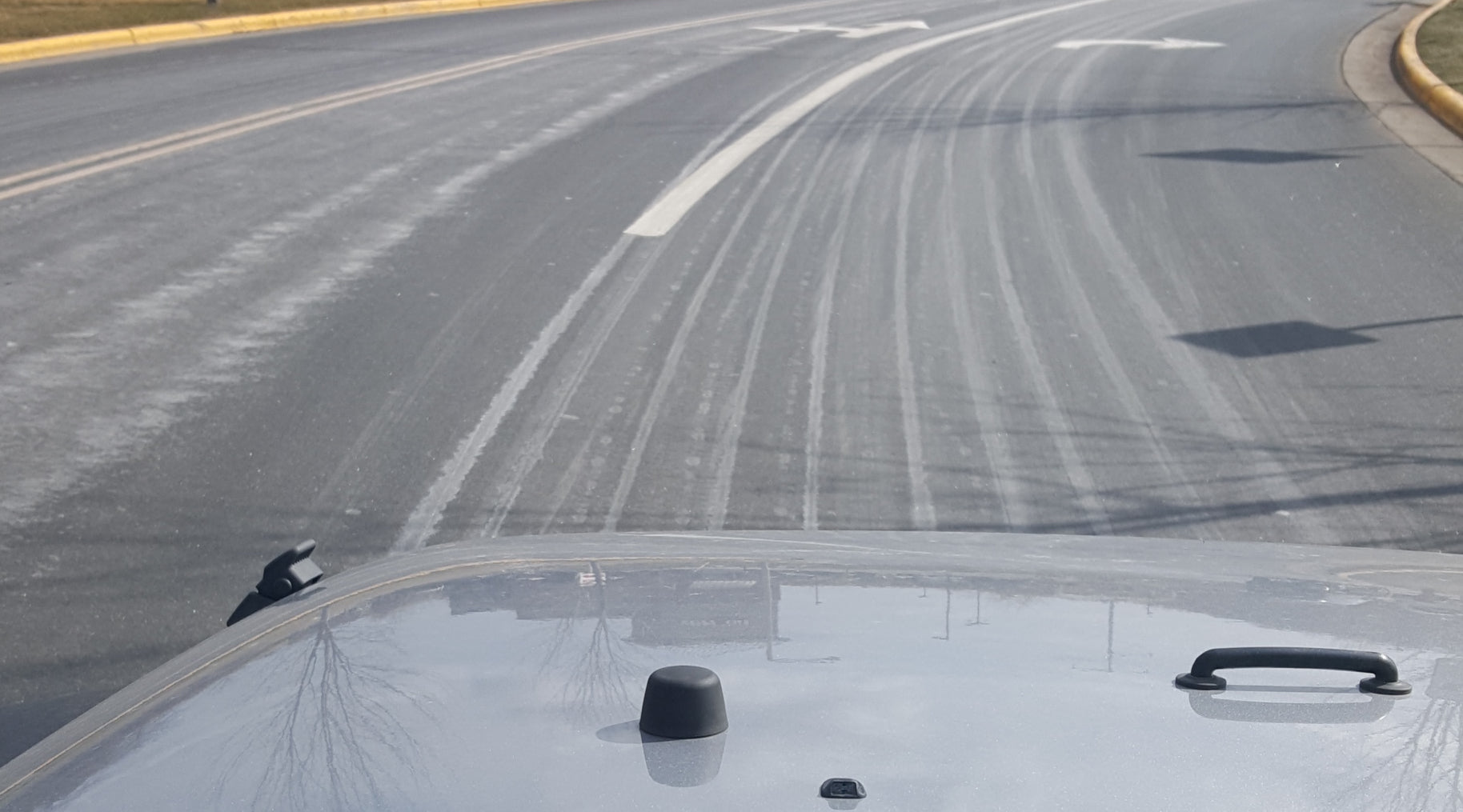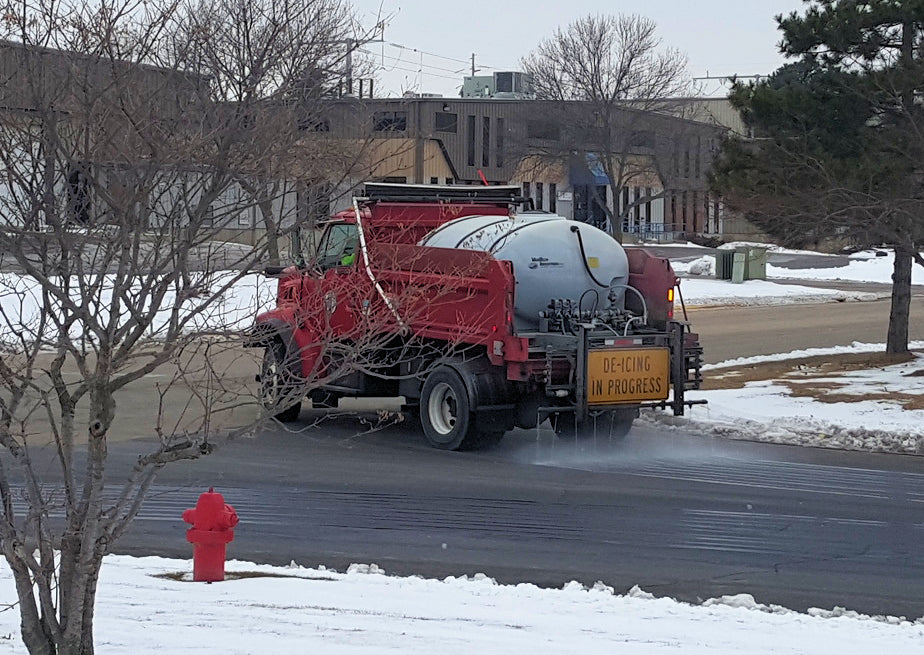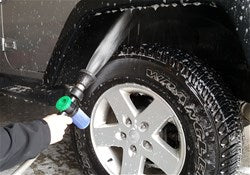How to Save Your Car from Brine Sprayed on Roads

How to Save Your Car from Brine Sprayed on Roads
Have you ever noticed grayish parallel lines on a road in winter? Especially before a snowstorm? That's brine. It's a very effective snow and ice melting treatment for roads, and it's also very bad for your car.
The Tell-Tale Sign of Brine

Those grey parallel lines are brine that has been spread to melt snow and ice in advance of a snowstorm.

This is a photo of a truck applying the brine solution. The brine solution goes on wet but dries after application.
So What is Brine?
Brine is a mixture of salt and water and it's used in place of salt crystals on roads because it stays in place better. When rock salt crystals are spread on a road, a large percentage of them bounce and roll off to the side where they are of no help keeping the road free of ice and snow. But when those crystals are dissolved in water before they are spread, they stay on the road longer and increase the effectiveness.
Why is Brine Bad for Your Car?
What makes brine so desirable as an ice fighting road treatment also makes it harder on your car. Brine not only stays in places on roads, but when kicked up by driving over pavement treated with it, it stays on the underside of your car too. Crystals of salt bounce of roads, and they also bounce off your car. But brine coats every nook and cranny on your vehicle's underbody with two things that cause iron and steel to rust: water and salt. Either water or salt on their own are capable of causing rust of course, but the two combined are much more corrosive.
Brine Also Often Contains Magnesium Chloride
It is not just the fact that brine sticks well that makes it a good ice melter however. In many cases, brine is made with magnesium chloride. Magnesium chloride is a salt like the more familiar sodium chloride crystals, or rock salt, but it melts ice at lower temperatures. Unfortunately, if rock salt is bad for your car, then magnesium chloride is worse.
Any salt is bad news for the iron and steel in your car when it mixes with water. That crust of salt your car develops in winter is just waiting to mix with water and eat away the steel. Fortunately, sodium chloride requires fairly high humidity levels to wick moisture from the air. In the cold dry air of winter, there isn't enough water in the air for the sodium chloride crystals to dissolve in. So they stay crystals and do relatively less harm to your vehicle.
Magnesium chloride however mixes with water readily at low levels of humidity. Even in a dry time of year like winter, your vehicle's crust of magnesium chloride is busy sucking moisture out of the air and combining with it to form the water/salt combination that is so corrosive. And because it was spread as a brine to begin with, there is more of it, in more tight places on and under your car.

How to Save Your Car from Brine
Remove the Brine - We use Salt Away to remove all types of salt from our cars and trucks. The sooner it is removed, the less damage it can cause. Think of Salt Away in the same way you think of soap when washing your hands, it helps you remove the dirt. Road crews and salt trucks have been using Salt Away for years to help protect their vehicles.
In addition to removing the salt from your vehicle, Salt Away provides temporary protection from rust on unprotected surfaces.
Vehicle Rust Protection - Just rinsing away the salt after exposure is good but rust protection is key for keeping rust away in the highly corrosive conditions that exist on many roads. We have many options that help protect the under-body of vehicles.
- Fluid Film is a popular coating because it protects, is easy to apply, and can be removed if needed.
- Our vehicle Undercoating leaves a very durable black coating that provides many years of protection.
- For those hard to reach spots, our Cavity Wax is used to coat the inside of frame rails and other hidden rust prone areas.
